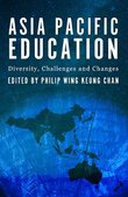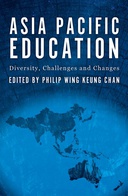Explore

Education in Asia Pacific countries is being transformed by globalisation and the market economy. Most economies within the region have flourished due to increased regional capital flow, trade and other forms of economic and political interaction. The Asia Pacific also has rich and unique traditions, which create cultural diversity as well as common challenges, including obstacles of language and geographical separation. Additionally, there is a growing reaction to the predominance of Western social theories that is fuelling recognition of and movement towards theories that reference the wide range of contextual and cultural perspectives available in the East.Contributors offer Eastern-oriented perspectives on teacher education, parent participation, government withdrawal, textbook content, uses of modern technology, the challenges of migrating families and tertiary students who travel from overseas for study. Their commentaries highlight issues of equity, identity and social justice.
This book is included in DOAB.
Why read this book? Have your say.
You must be logged in to comment.
Rights Information
Are you the author or publisher of this work? If so, you can claim it as yours by registering as an Unglue.it rights holder.Downloads
This work has been downloaded 276 times via unglue.it ebook links.
- 82 - pdf (CC BY-NC-ND) at OAPEN Library.
- 81 - pdf (CC BY-NC-ND) at Unglue.it.
Keywords
- Asia-Pacific
- Australia
- China
- cultural influences on education
- cultural influences on learning
- culture in education
- Education
- Education / Philosophy & Social Aspects
- education in Asia Pacific
- English as a Second Language
- ESL
- KUnlatched
- Language
- Languages
- parental influence on education
- Pedagogy
- Politics and education
- social equity and education
- social justice and education
- Teaching science in Bangladesh
- Textbook
- thema EDItEUR::C Language and Linguistics
Links
DOI: 10.26530/oapen_627771Editions


